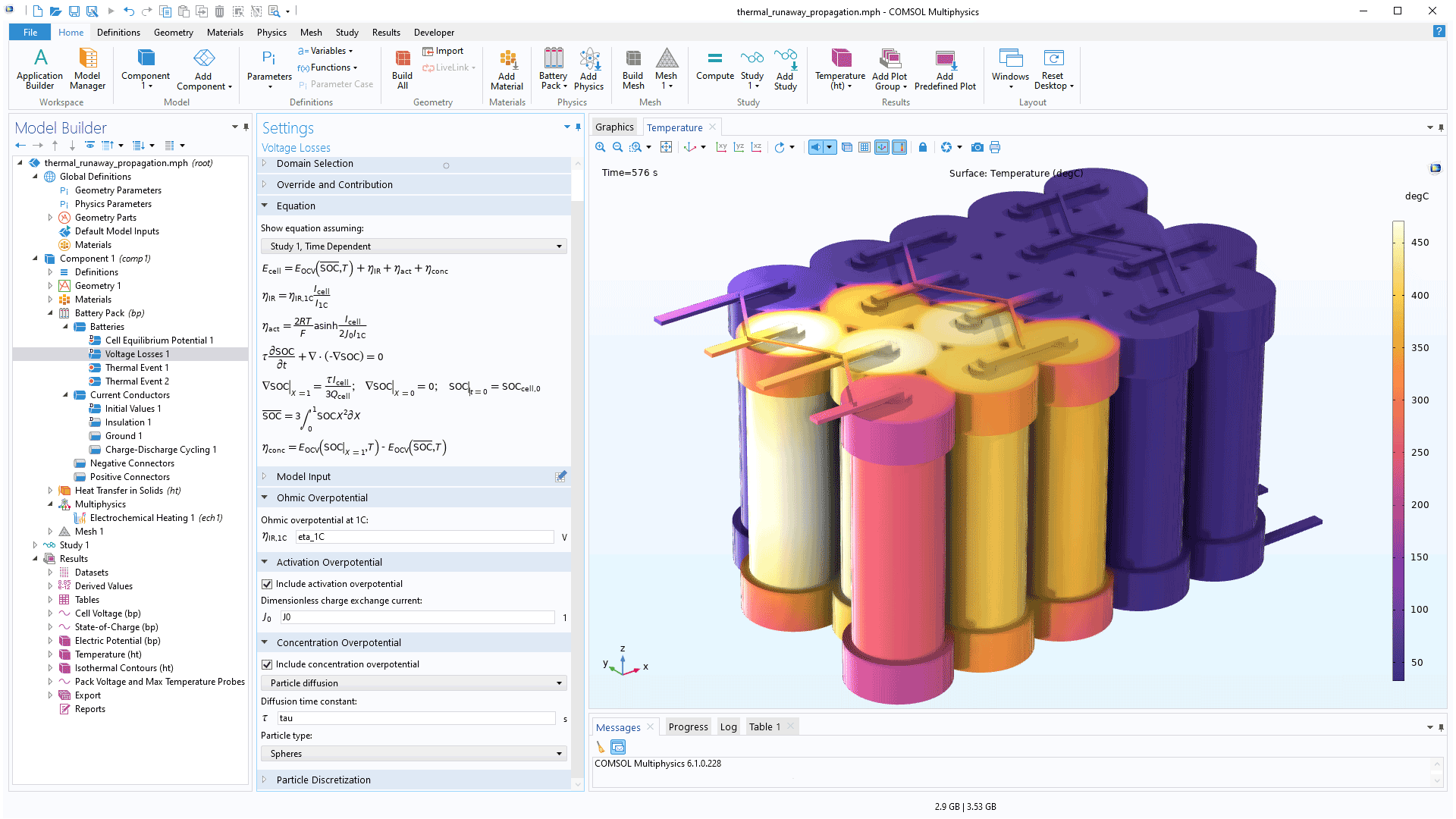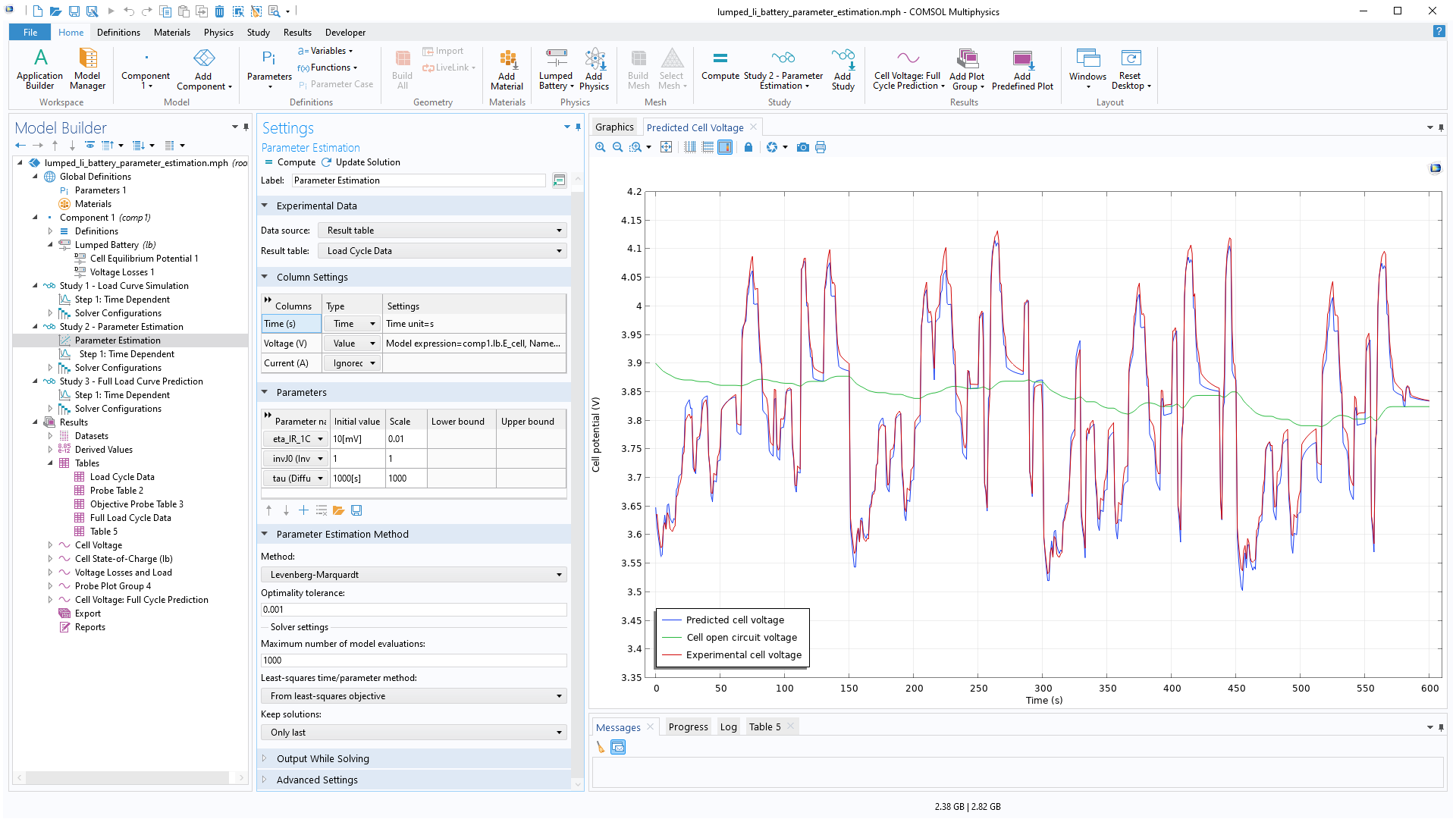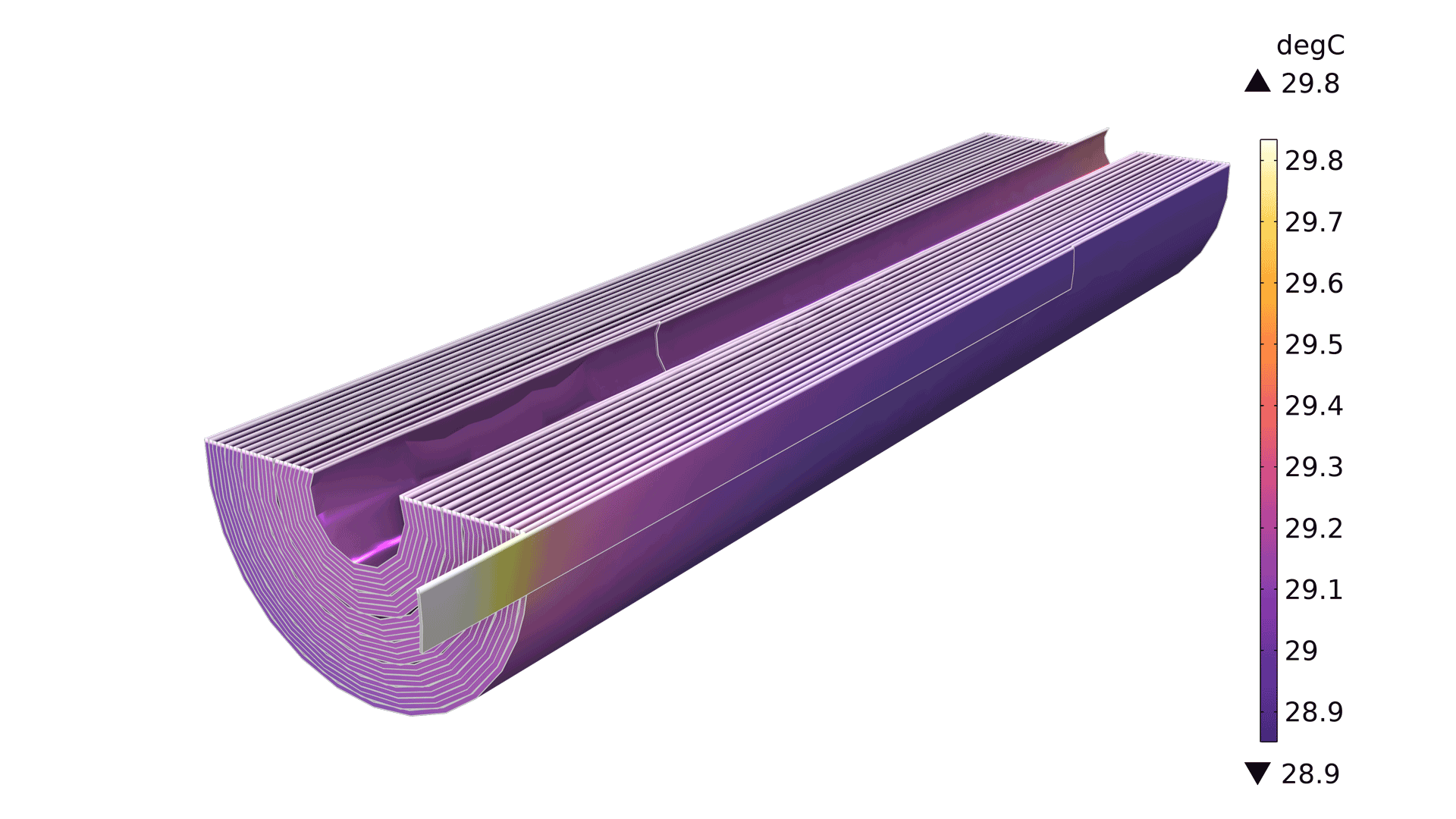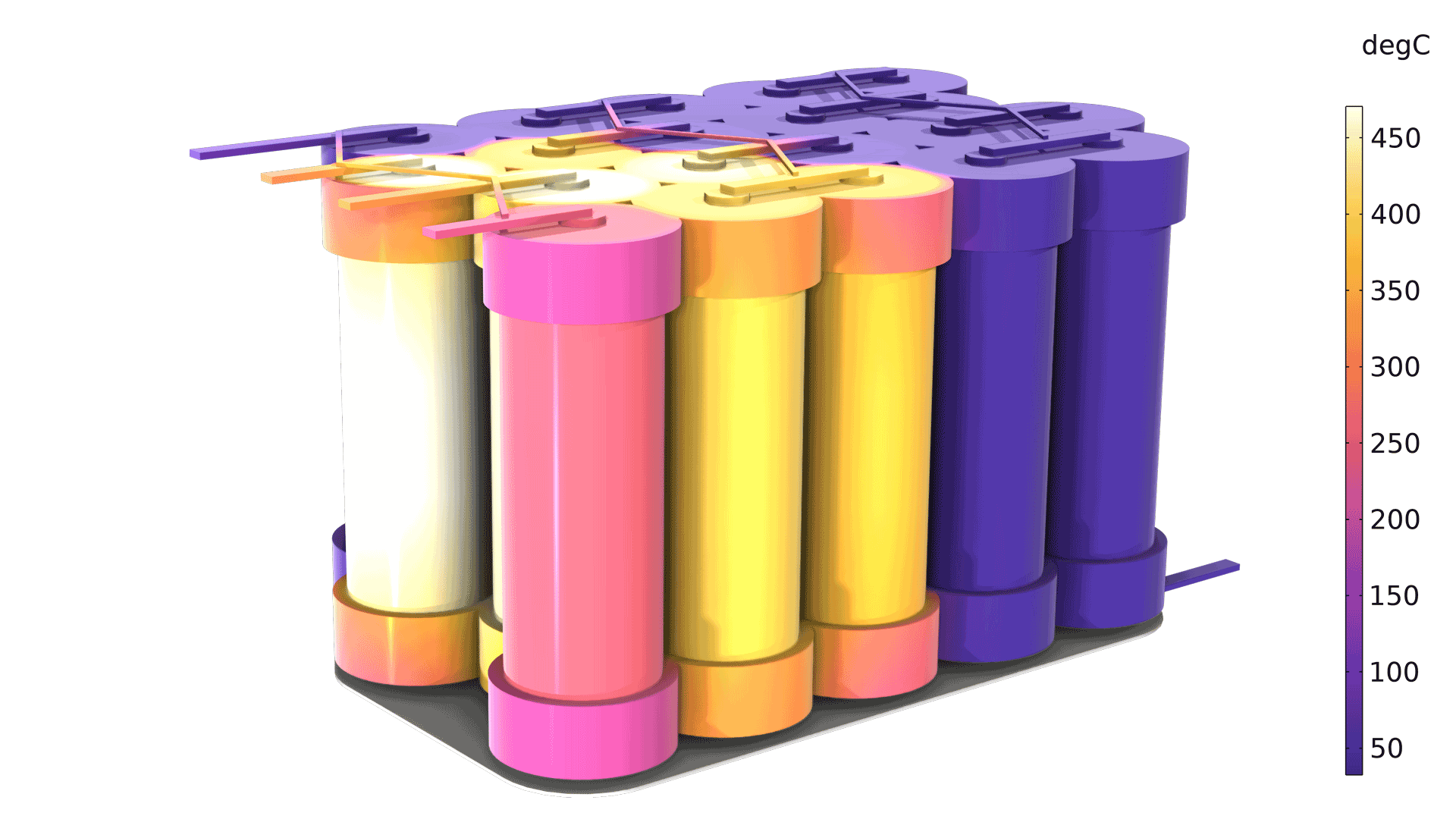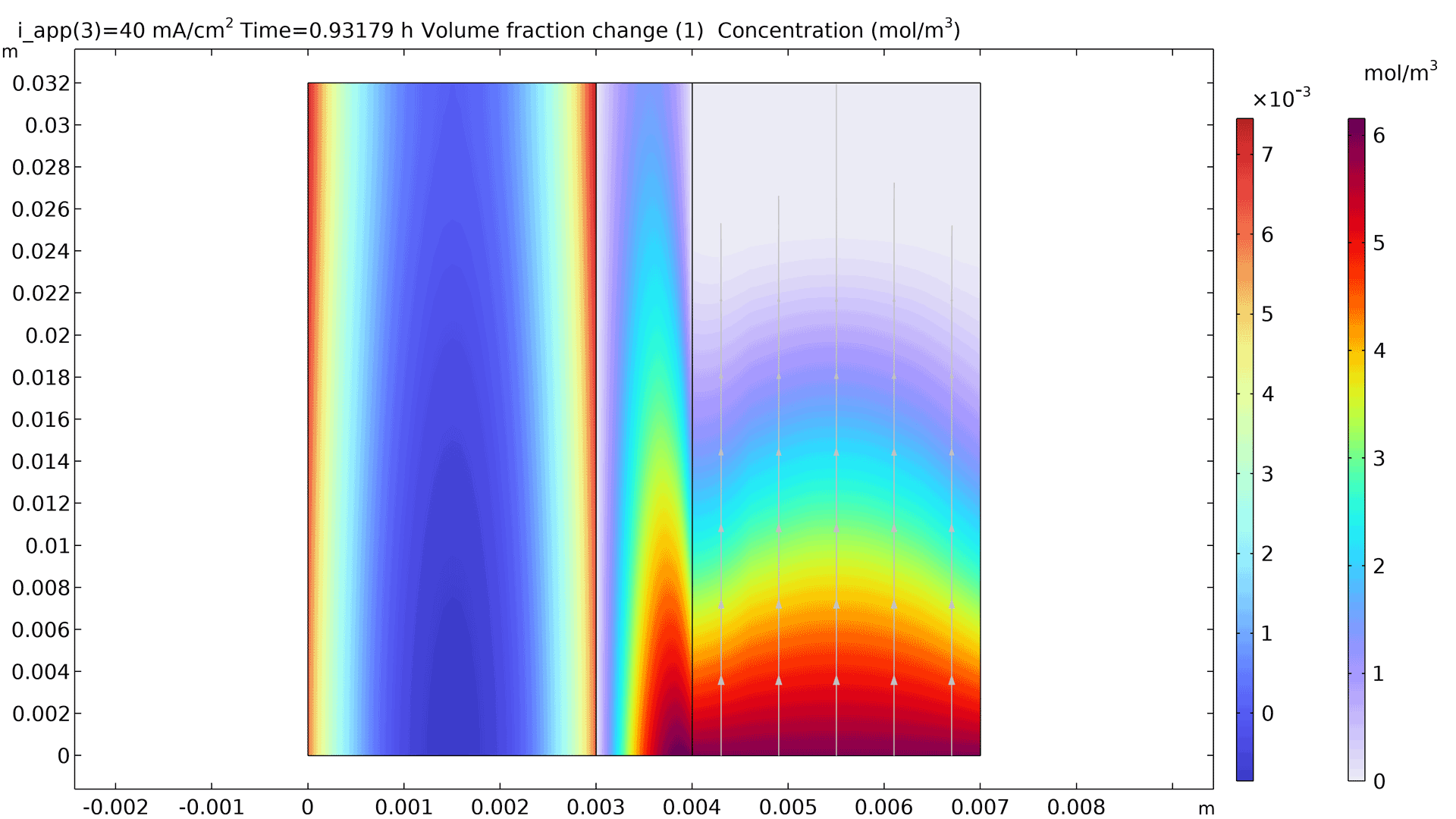support@comsol.com
Battery Design Module Updates
For users of the Battery Design Module, COMSOL Multiphysics® version 6.1 introduces a new interface for modeling multiple batteries, the ability to simulate heat transfer in battery layers, and the addition of the Parameter Estimation study step. Learn about these updates and more below.
New Battery Pack Interface
A new Battery Pack interface features a one-to-many approach for setting up multiple lumped battery models and connecting them in a 3D geometry. This interface is typically used together with a Heat Transfer interface for modeling thermal pack management. The interface also features thermal events that may be used to study thermal runaway propagation problems. You can see this addition in the new Thermal Runaway Propagation in a Battery Pack model and the existing Thermal Distribution in a Pack of Cylindrical Batteries and Liquid-Cooled Lithium-Ion Battery Pack models.
New Battery Layers Node in Heat Transfer
A new Battery Layers domain node in the Heat Transfer interfaces makes it possible to model heat transfer in the layers of battery cells using a homogenized approach, where the individual layers of the cell do not need to be resolved in the computational mesh. The homogenization of the heat equation is performed through the use of anisotropic thermal conductivity tensors, which are defined based on the configuration of the battery layers and the thermal conductivity in the in-layer and through-layer directions. View this feature in the new Thermal Runaway Propagation in a Battery Pack model and the following existing models:
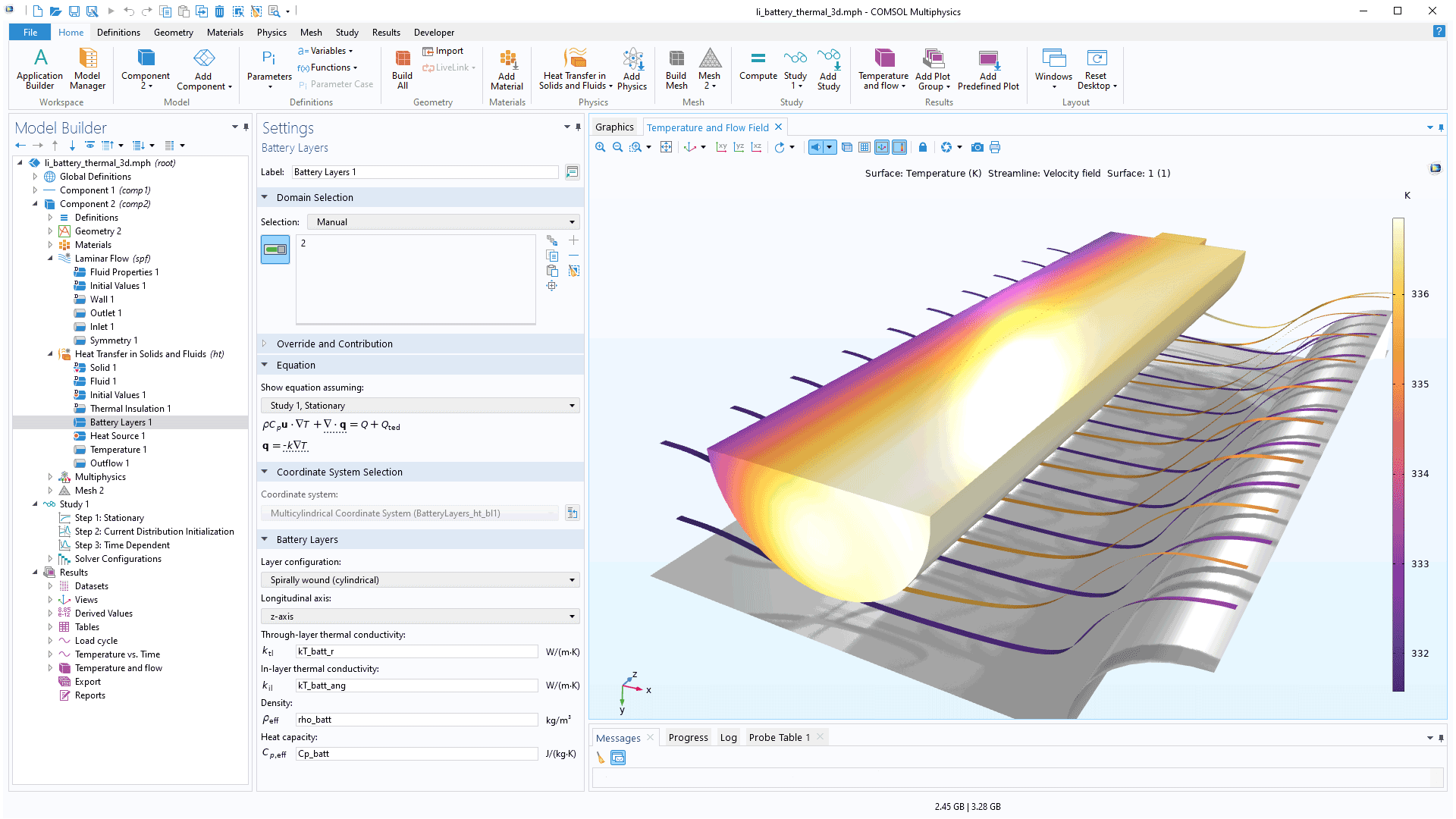
Parameter Estimation Now Included in the Battery Design Module
The Parameter Estimation study step and BOBYQA, Levenberg-Marquardt, and IPOPT optimization solvers are now available with a Battery Design Module license. Parameter estimation is commonly used for determining suitable parameter values for battery models, based on experimental data. The existing Parameter Estimation of a Time-Dependent Lumped Battery model can now be run using a Battery Design Module license only.
Improved Continuity Condition on Assembly Pair Boundaries
Assembly pairs are typically used when nonmatching mesh elements are used on each side of a boundary. The need to use assembly pairs may arise when using, for instance, swept meshes in complex 3D geometries. In this version, the Continuity boundary condition for potential dependent variables (for both the electrode and electrolyte phases) of assembly pair boundaries has been significantly improved in terms of its accuracy and numerical stability in the Current Distribution interfaces and the Lithium-Ion and Battery with Binary Electrolyte interfaces.
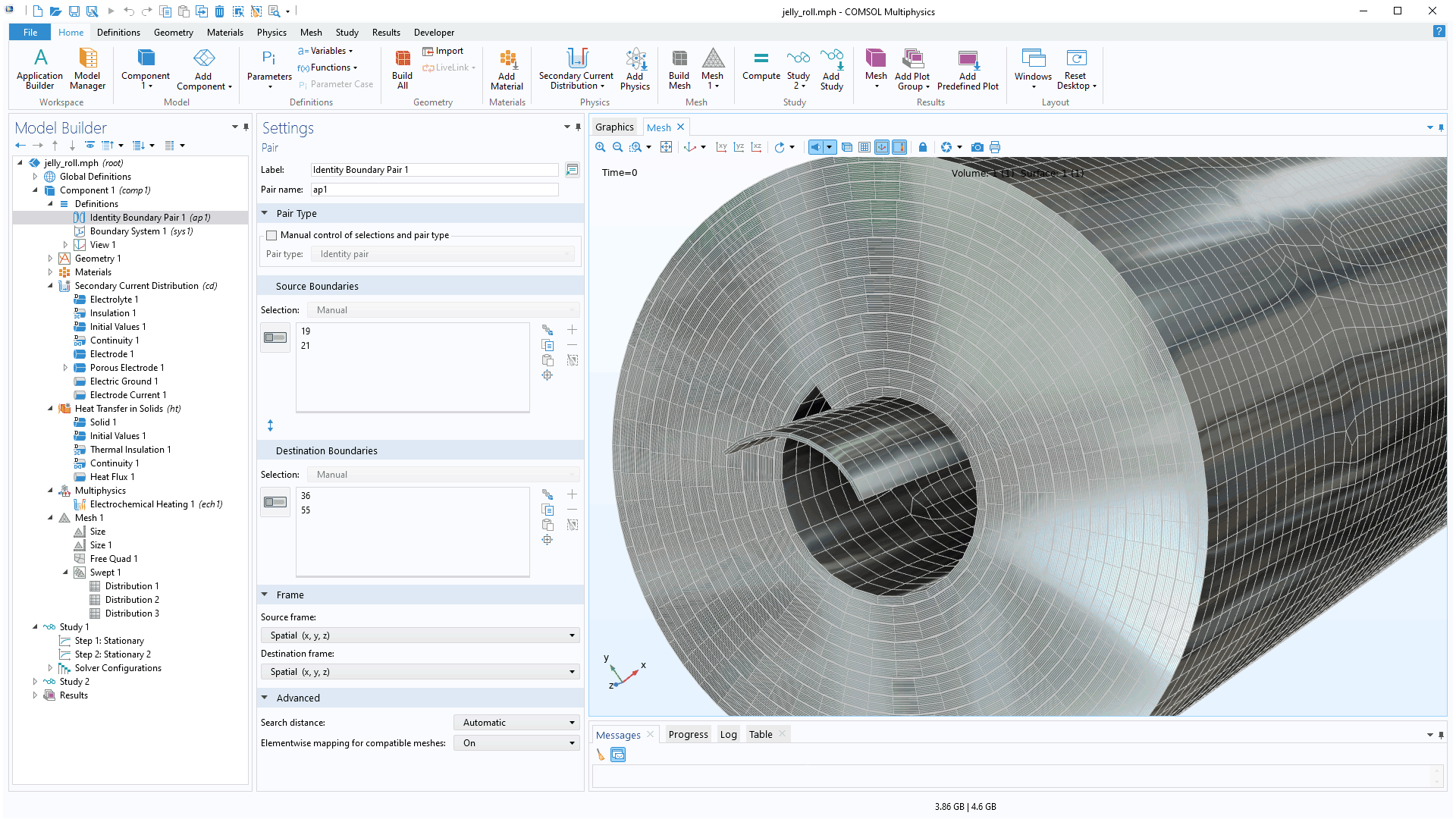
Nonideal Species Activity Coefficients
Version 6.1 introduces functionality for modeling nonideal electrolytes using Debye–Hückel theory. In such electrolytes, even a small variation in concentration — in the millimolar range — may cause measurable changes in quantities such as pH and electrode equilibrium potential. The ability to account for nonideal effects in modeling and simulation is therefore an important addition to the electrochemistry interfaces. In this version, it is now possible to include these effects in the Tertiary Current Distribution, Nernst-Planck and Transport of Diluted Species interfaces. The activity coefficients may be defined using either the Debye-Hückel species activity or user-defined expressions.
Improved Performance of Property Evaluations
The enhanced performance of property evaluations is noticeable in all property computations, such as density and viscosity, as well as for thermodynamic properties like heat capacity and vapor pressure. Models where a significant part of the solution time is spent performing property evaluations can now be solved in as much as 30% less time.
Advanced Chemical Formulas
It is now possible to use more advanced formulas for chemical species and chemical reactions. The enclosing marks (),[], and {} can be used to indicate structural units in the molecular formula in a coordination complex, for example. To improve readability, simplified names can be used in the reaction formula to indicate an entire species or a part of the molecular structure. When reaction balancing is performed, the complete composition and charge are considered.
Improved Functionality for Adding Species to a System
The functionality to search for species in the database and add them to a model has been extended and improved. The species filtered from a search can now be added one at a time using the Enter key. In addition, it is no longer necessary to reset the filter result when a species has been added.
New Tutorial Models
COMSOL Multiphysics® version 6.1 brings several new tutorial models to the Battery Design Module.
Jelly Roll on a Flattened Geometry
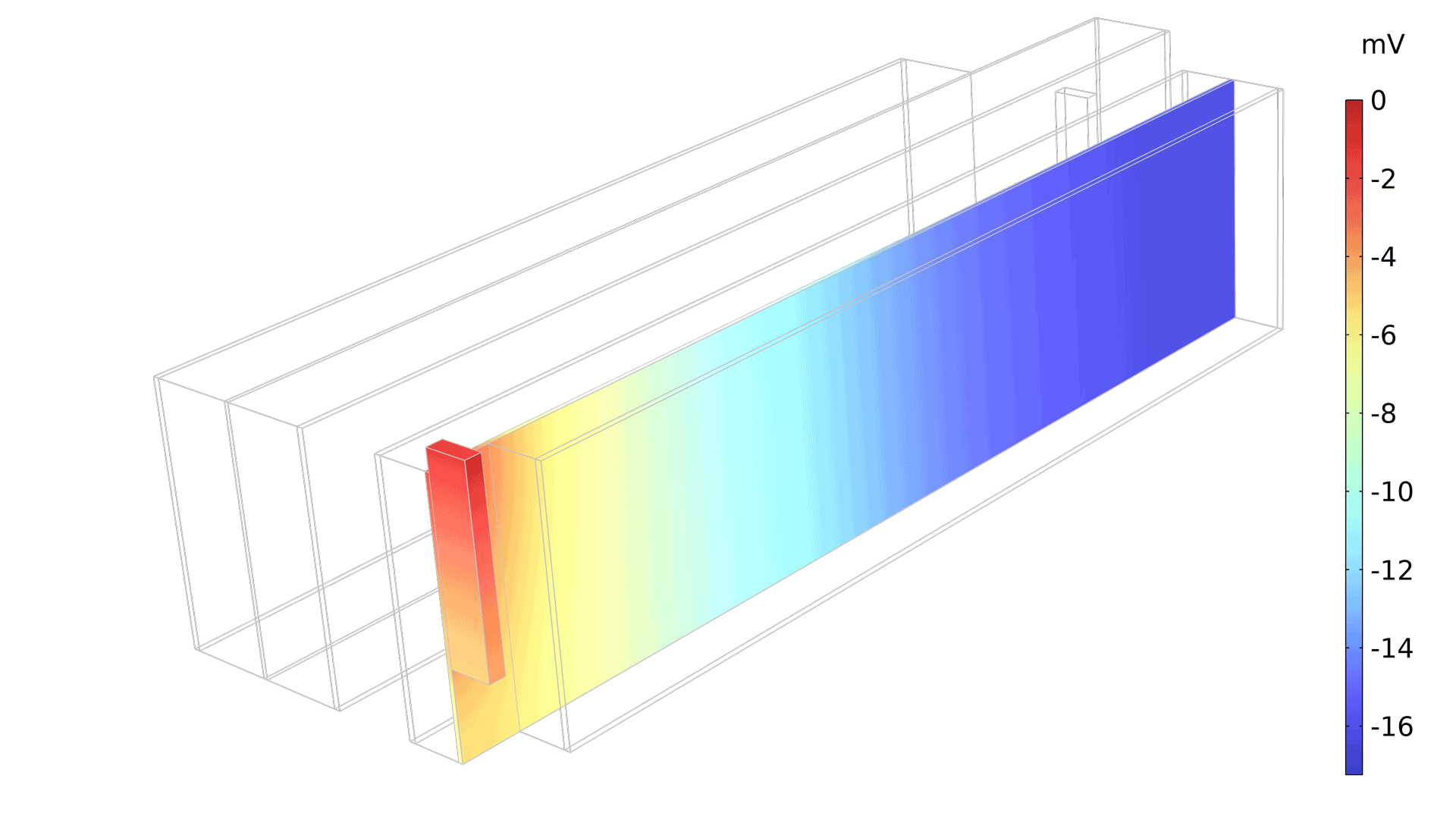
Application Library Title:
jelly_roll_flattened
Download from the Application Gallery
Thermal Runaway Propagation
Application Library Title:
thermal_runaway_propagation
Download from the Application Gallery
Zinc Bromine Redox Flow Battery
Application Library Title:
znbr_flow_battery
Download from the Application Gallery

